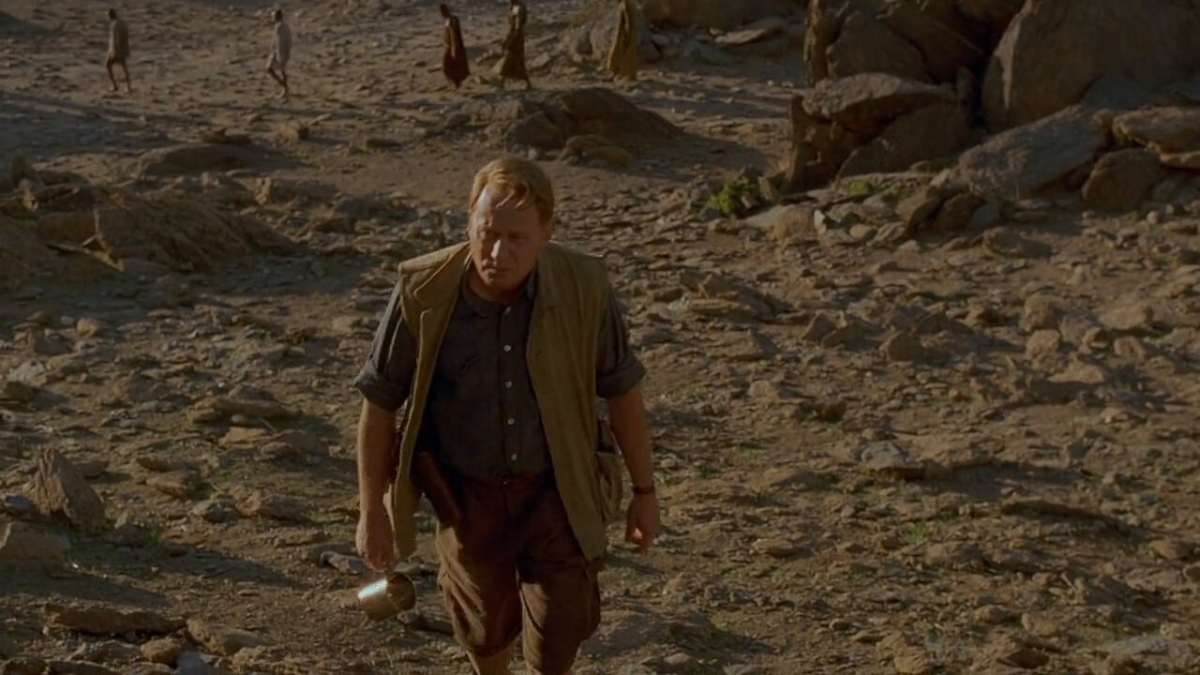‘God was with him’: Actor James Woods describes harrowing wildfire. This gripping account details Woods’ terrifying experience escaping a raging wildfire, offering a raw and emotional perspective on survival against the odds. We’ll explore his harrowing escape, the role of faith in his survival, and the devastating impact of the wildfire on the environment and community.
From the initial moments of panic to the eventual escape, Woods’ story is a testament to human resilience and the power of faith. We’ll delve into the specific events that shaped his experience, analyzing his emotional journey and the key decisions that led to his survival. Beyond Woods’ personal narrative, we’ll examine the wider consequences of the wildfire, including its environmental impact and the community’s recovery efforts.
James Woods’ Wildfire Escape: A Harrowing Account
Actor James Woods’ experience escaping a devastating wildfire offers a compelling narrative of survival, faith, and the profound impact of natural disasters. His account, punctuated by the phrase “God was with him,” provides insights into the intense physical and emotional challenges faced during such events, as well as the broader implications for environmental awareness and disaster preparedness.
James Woods’ Personal Account of the Wildfire Experience

Woods’ description vividly portrays the sudden onset of the wildfire. He recounts the initial moments of panic as the flames approached, the terrifying speed of the fire’s advance, and the immediate decisions he had to make to ensure his safety. His emotional journey is one of escalating fear, moments of utter helplessness against the overwhelming power of nature, interspersed with flashes of hope and determination to survive.
Actor James Woods’ wildfire escape story, where he credited divine intervention (“God was with him”), highlights the fragility of life. This makes you think about the recent incident in London, where a car was blown up near Regent Street – check out the news report here: Car blown up in bomb scare near Regent Street ‘had its phone – and how easily things can change.
Woods’ experience reminds us to appreciate the unexpected moments of survival, contrasting sharply with such sudden, violent events.
Specific events, such as navigating treacherous terrain and encountering obstacles in his escape route, highlight the intensity and life-threatening nature of the situation. His narrative follows a chronological order, detailing his escape route, the key decisions he made in the face of danger, and the near misses that underscored the precariousness of his situation.
The Phrase “God Was With Him”: Interpretation and Context
The recurring phrase, “God was with him,” reflects Woods’ personal faith and belief in a higher power. In the context of his harrowing experience, it signifies a profound sense of divine protection and intervention. The statement carries significant religious and spiritual implications, highlighting the role of faith in providing comfort, strength, and hope during times of extreme adversity.
This expression can be compared to other accounts of survival where individuals attribute their escape to divine intervention or a higher power. Specific moments during his escape, such as narrowly avoiding being trapped or finding unexpected assistance, could be interpreted as instances where faith played a role in his survival.
The Wildfire’s Impact: Environmental and Social Consequences

The wildfire’s impact extended far beyond Woods’ personal experience. The scale of the environmental devastation was significant, causing widespread damage to the landscape, flora, and fauna. The social and economic consequences affected the entire community, leading to displacement, property loss, and disruption of livelihoods. The following table summarizes these impacts:
| Type of Impact | Description | Extent of Damage | Recovery Efforts |
|---|---|---|---|
| Environmental | Loss of vegetation, habitat destruction, air pollution, soil erosion | Widespread, affecting thousands of acres | Reforestation, habitat restoration, air quality monitoring |
| Social | Displacement of residents, loss of homes and businesses, trauma and psychological distress | Significant impact on community well-being | Emergency housing, mental health services, community support programs |
| Economic | Damage to infrastructure, loss of agricultural production, disruption of tourism | Substantial economic losses for individuals and the region | Insurance claims, government aid, economic recovery initiatives |
| Infrastructure | Damage to roads, bridges, power lines, and communication systems | Disruption of essential services and transportation | Repair and reconstruction of damaged infrastructure |
A visual representation of the wildfire’s devastation would depict a landscape scarred by fire, with blackened trees and charred remains of homes and buildings. The smoke-filled sky and the overall sense of destruction would emphasize the scale of the catastrophe.
Resilience and Recovery: Woods’ Actions and Aftermath
Following his escape, Woods focused on immediate needs, such as securing shelter and obtaining essential supplies. He likely received support from the community, including aid organizations and fellow residents. The psychological impact of the experience would have been substantial, potentially leading to long-term effects such as PTSD or anxiety. Recovery involved both individual and community efforts. For Woods, this might have included therapy, support groups, and rebuilding his life.
For the community, recovery entailed rebuilding homes, restoring infrastructure, and providing long-term support to those affected.
Lessons Learned and Broader Implications, ‘God was with him’: Actor James Woods describes harrowing wildfire
Woods’ experience highlights the importance of preparedness, early warning systems, and effective evacuation plans. The wildfire also underscores the need for responsible land management, wildfire prevention strategies, and investment in infrastructure that can withstand extreme weather events. Woods’ story can raise public awareness about the risks of wildfires and the importance of community preparedness. Improvements in emergency response could include better communication systems, improved evacuation routes, and enhanced coordination among emergency services.
James Woods’ wildfire escape story, where he credits divine intervention, is a powerful testament to resilience. It makes you think about the unpredictable nature of life, much like the rollercoaster of emotions in Tim Allen’s new show, which, according to this review Tim Allen’s ‘Shifting Gears’ is exclusively for Tim Allen lovers: Review , is a hit-or-miss affair depending on your existing fandom.
Woods’ experience highlights the importance of appreciating the unexpected moments, a lesson perhaps worth considering while watching Allen’s latest project.
Preventative measures might involve controlled burns, forest thinning, and public education campaigns.
Last Word: ‘God Was With Him’: Actor James Woods Describes Harrowing Wildfire

James Woods’ harrowing wildfire escape, recounted in his own words, serves as a powerful reminder of nature’s unpredictable power and the importance of preparedness. His story highlights not only the physical dangers of wildfires but also the profound emotional and psychological impact they can have. The phrase “God was with him” encapsulates the spiritual dimension of his survival, prompting reflection on faith, resilience, and the human spirit’s capacity to overcome adversity.
Want to hear a crazy story? Actor James Woods went through a truly terrifying wildfire experience. He shared his ordeal in a recent interview, saying he felt divine intervention saved him. You can read all about it in this article: ‘God was with him’: Actor James Woods describes harrowing wildfire. It’s a wild tale of survival and faith, definitely worth checking out if you’re into dramatic true stories.
His experience offers valuable lessons for disaster preparedness and community support in the face of such devastating events.
FAQ Summary
What type of wildfire was it?
The specific type of wildfire isn’t detailed in the provided Artikel, but further research would be needed to determine this.
Did James Woods suffer any injuries?
The Artikel doesn’t specify if he sustained any physical injuries. More information is needed.
What long-term effects did the experience have on Woods?
The Artikel mentions potential long-term psychological effects, but specifics are not provided.
What kind of community support did he receive?
The Artikel mentions community support but doesn’t detail the specific types of aid received.
